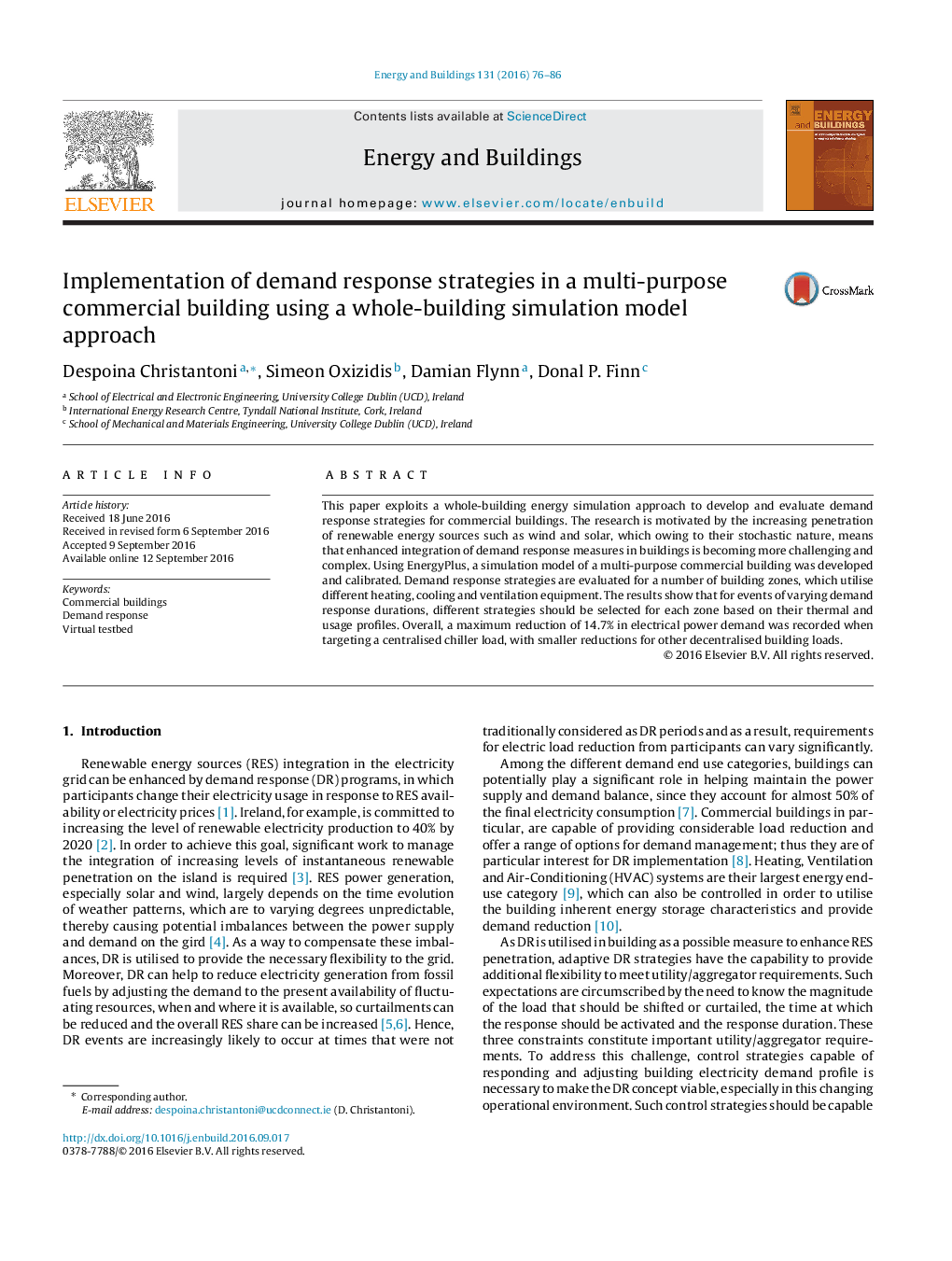| Article ID | Journal | Published Year | Pages | File Type |
|---|---|---|---|---|
| 4914286 | Energy and Buildings | 2016 | 11 Pages |
Abstract
This paper exploits a whole-building energy simulation approach to develop and evaluate demand response strategies for commercial buildings. The research is motivated by the increasing penetration of renewable energy sources such as wind and solar, which owing to their stochastic nature, means that enhanced integration of demand response measures in buildings is becoming more challenging and complex. Using EnergyPlus, a simulation model of a multi-purpose commercial building was developed and calibrated. Demand response strategies are evaluated for a number of building zones, which utilise different heating, cooling and ventilation equipment. The results show that for events of varying demand response durations, different strategies should be selected for each zone based on their thermal and usage profiles. Overall, a maximum reduction of 14.7% in electrical power demand was recorded when targeting a centralised chiller load, with smaller reductions for other decentralised building loads.
Keywords
Related Topics
Physical Sciences and Engineering
Energy
Renewable Energy, Sustainability and the Environment
Authors
Despoina Christantoni, Simeon Oxizidis, Damian Flynn, Donal P. Finn,
